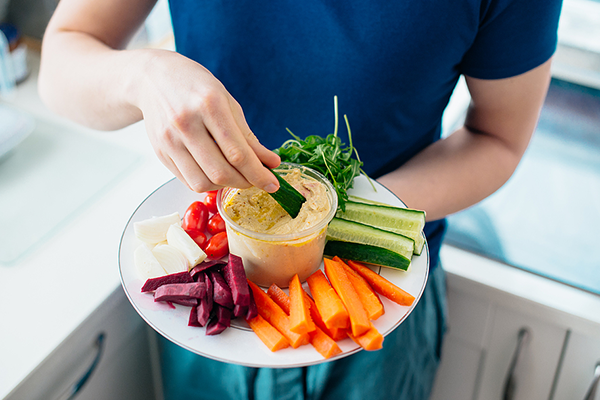More often than not, the term “snacking” can get a lot of flak when it comes to following through with dietary goals. Often, it is associated with junk foods and mindless eating, which when combined, often can lead to undesirable health outcomes. But what if snacking actually can play a major role in meeting the nutritional goals that you have set for yourself?
In our society, it’s typically expected of us to eat around three meals a day: breakfast, lunch, and dinner. Things that we eat during these mealtimes typically tend to be more generous with their portions and consist of multiple food groups. The things we eat in between mealtimes – the non-specific, standalone foods that satisfy our hunger in between meals – are referred to as snacks.
Over the years, the idea of eating snacks – or, snacking – has become strongly associated with the consumption of empty calories, which refers to foods that are high in calories but low in health-benefitting vitamins and minerals. This category tends to include the highly-processed, “junk” foods and sugar-sweetened drinks that, when consumed excessively, are associated with poorer health outcomes due to their high amounts of calories and lack of essential nutrients.
However, as nutrition-based knowledge has evolved over the decades, the idea of snacking deserves an opportunity to return to its original definition.
If we consider a snack to be whatever we eat or drink in-between our normal meal periods, the idea of snacking starts to seem like much less of a bad thing. In fact, thinking of snacking in this way allows for it to be a potential tool in our efforts to better our health, instead of a barrier on the way to our diet goals. This further allows us to forget our typical stereotypes of what “snacking” is to us and lets us include any types of food we choose into these between-meal periods throughout our day. If we can be mindful of the decisions we make during these time windows, we can choose more nutrient-dense, healthful snacks that are beneficial to us and our overall health.
Now that we know that snacks have the potential to be healthy, you may be thinking, “Yeah, but which snacks are healthy for me?” — And reasonably so. Snacks are generally considered to be about 250 calories in total, give-or-take a few depending on how physically active you are. It’s generally a good rule of thumb to try to include snacks that are balanced in carbohydrates, protein, and fats. Still, the perfect healthy snack for you is going to depend on a lot of things, including your personal preferences. It’s also important to consider what your diet looks like without snacks included. Take a day to keep track of the foods you eat and try to get an idea of what healthful foods you don’t eat regularly (nuts, fruits, vegetables, etc.).
Then, you can add in snacks based upon what’s typically lacking in your diet. Again, this will be based upon your individual lifestyle, preferences and dietary needs, but here are a couple of ideas to get you started and brainstorming new snack ideas that are tailored to you.
Make-Your-Own Trail Mix
Store-bought, pre-made trail mixes are delicious, but often they are packed with more sweets & candies then we initially intend to have. Making your own trail mix allows you to choose exactly what’s in it, leaving the potential for a terrifically healthful snack that keeps you satisfied until your next meal. Some ideas of things to include in your mix include pumpkin seeds, your favorite unsalted nuts, dried fruit, and unsalted pretzels, but you can tailor your mix to your specific liking. So, have fun with this and experiment with your combinations! Aim to limit yourself to ¼ cup serving sizes, as trail mix can contribute to elevated calorie intake if eaten often.
Single-Serving Veggie Snack Packs
Convenience is often key when it comes to the best snacks. You can add more veggies into your diet by looking for single-serving, pre-packaged bags of fresh vegetables at the grocery store, like baby carrots for example. However, a cheaper & more efficient way of doing this is to purchase zip-lock bags and portion out vegetables yourself (aim for one cup per bag). This way, you can mix and match to include different flavors & textures, and you can also prepare these snack bags in advance so that you can plan out your snack throughout the day and/or week. Add in a small container (with a lid, of course!) of your favorite dipping sauce/salad dressing your bags to add some extra flavor and healthy fats as well.
With snacks, the possibilities are endless! That being said, you don’t need to completely cut out your favorite snack cakes, potato chips, or candies as your snack if you enjoy them – just be mindful of the amounts you eat, practice moderation, and try out some of these snacking tips. Together over time, making small positive changes in your diet can lead to a healthy, balanced diet that keeps you – and your body – happy.





